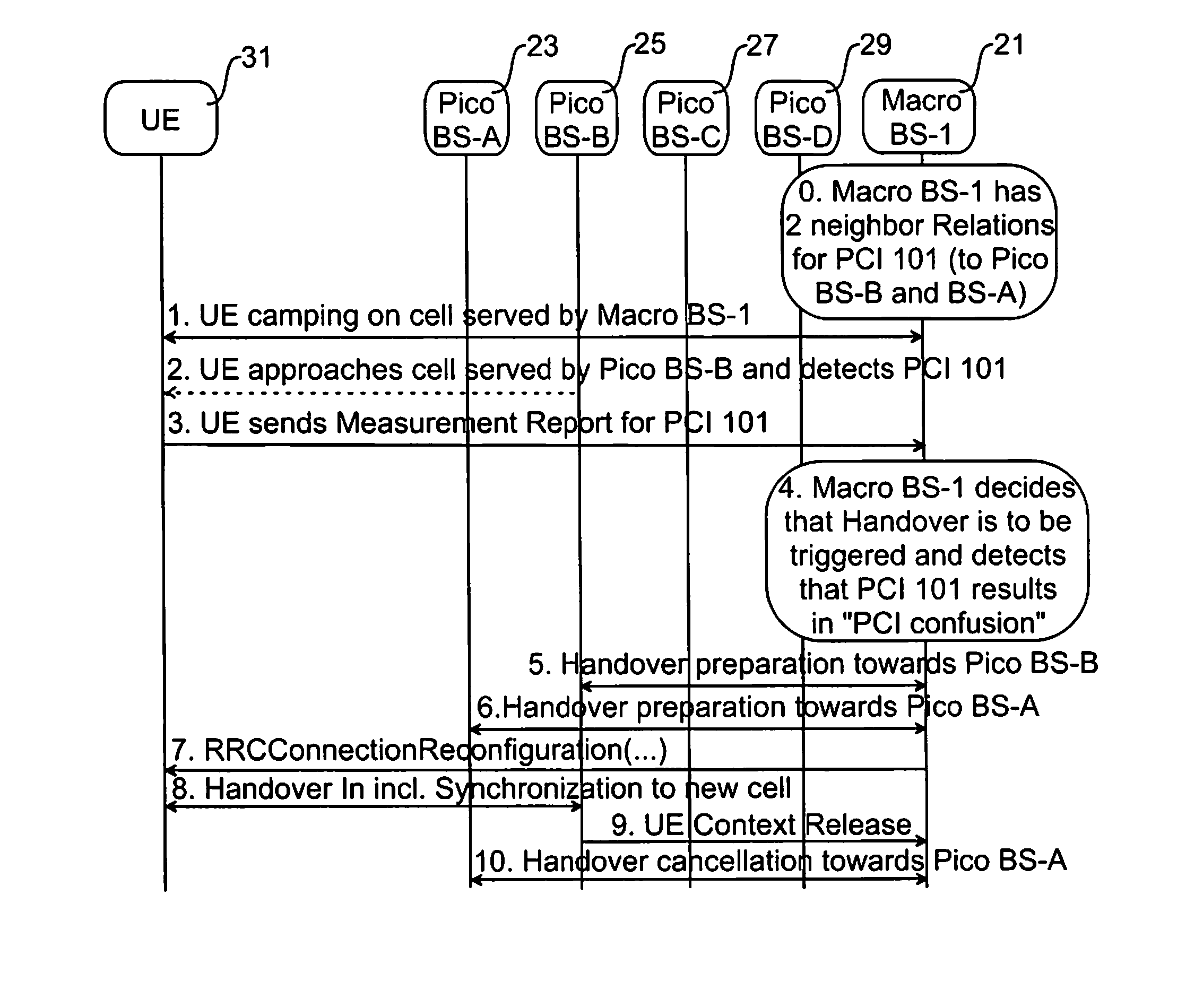Methods in a base station for handling handover, base station, computer program and computer program product
a technology of computer program and base station, applied in the direction of electrical equipment, wireless communication, etc., can solve the problems of triggering handover towards the hetnet cell, difficult to dedicate a suitable number of pcis to hetnet, and limited number of different pcis in various communication technologies, etc., to achieve resource efficient and fast handover
- Summary
- Abstract
- Description
- Claims
- Application Information
AI Technical Summary
Benefits of technology
Problems solved by technology
Method used
Image
Examples
Embodiment Construction
[0036]In the following description, for purposes of explanation and not limitation, specific details are set forth such as particular architectures, interfaces, techniques, etc. in order to provide a thorough understanding of the invention. However, it will be apparent to those skilled in the art that the invention may be practiced in other embodiments that depart from these specific details. In other instances, detailed descriptions of well-known devices, circuits, and methods are omitted so as not to obscure the description of the invention with unnecessary detail. Like numbers refer to like elements throughout the description.
[0037]FIG. 3 illustrates schematically an environment in which embodiments of the invention may be implemented. The invention could for example be implemented in a layered communication system comprising base stations serving overlaid cells and additional base stations serving underlaid cells. The underlaid cells have coverage areas at least partly overlappi...
PUM
 Login to View More
Login to View More Abstract
Description
Claims
Application Information
 Login to View More
Login to View More - R&D
- Intellectual Property
- Life Sciences
- Materials
- Tech Scout
- Unparalleled Data Quality
- Higher Quality Content
- 60% Fewer Hallucinations
Browse by: Latest US Patents, China's latest patents, Technical Efficacy Thesaurus, Application Domain, Technology Topic, Popular Technical Reports.
© 2025 PatSnap. All rights reserved.Legal|Privacy policy|Modern Slavery Act Transparency Statement|Sitemap|About US| Contact US: help@patsnap.com



